As a seasoned travel professional with over 15 years of guiding adventurers across Vietnam, I'm thrilled to unveil the top attractions in Sapa. This enchanting gem in Northern Vietnam boasts breathtaking landscapes and rich cultural tapestry, waiting to be explored. Forget impersonal guides – let me, Vicky Phan, be your personal compass. In this comprehensive guide, I'll weave together breathtaking vistas and immerse you in the vibrant spirit of Sapa's people. Prepare to be captivated by emerald rice terraces cascading down valleys, quaint villages nestled amidst misty mountains, and ancient traditions woven into the fabric of everyday life. So, pack your wanderlust and join me on an unforgettable journey through the heart of Sapa. Together, let's discover its hidden gems and create memories that will last a lifetime.
Sapa is a charming town in the northwest of Vietnam, surrounded by stunning mountains, rice terraces, and ethnic villages. It is a popular destination for travelers who want to experience the beauty and culture of this region. In this article, I will share with you some of the top attractions in Sapa that you should not miss on your trip. Whether you are looking for adventure, nature, or history, Sapa has something for everyone.
Fansipan Mountain: The Roof of Indochina
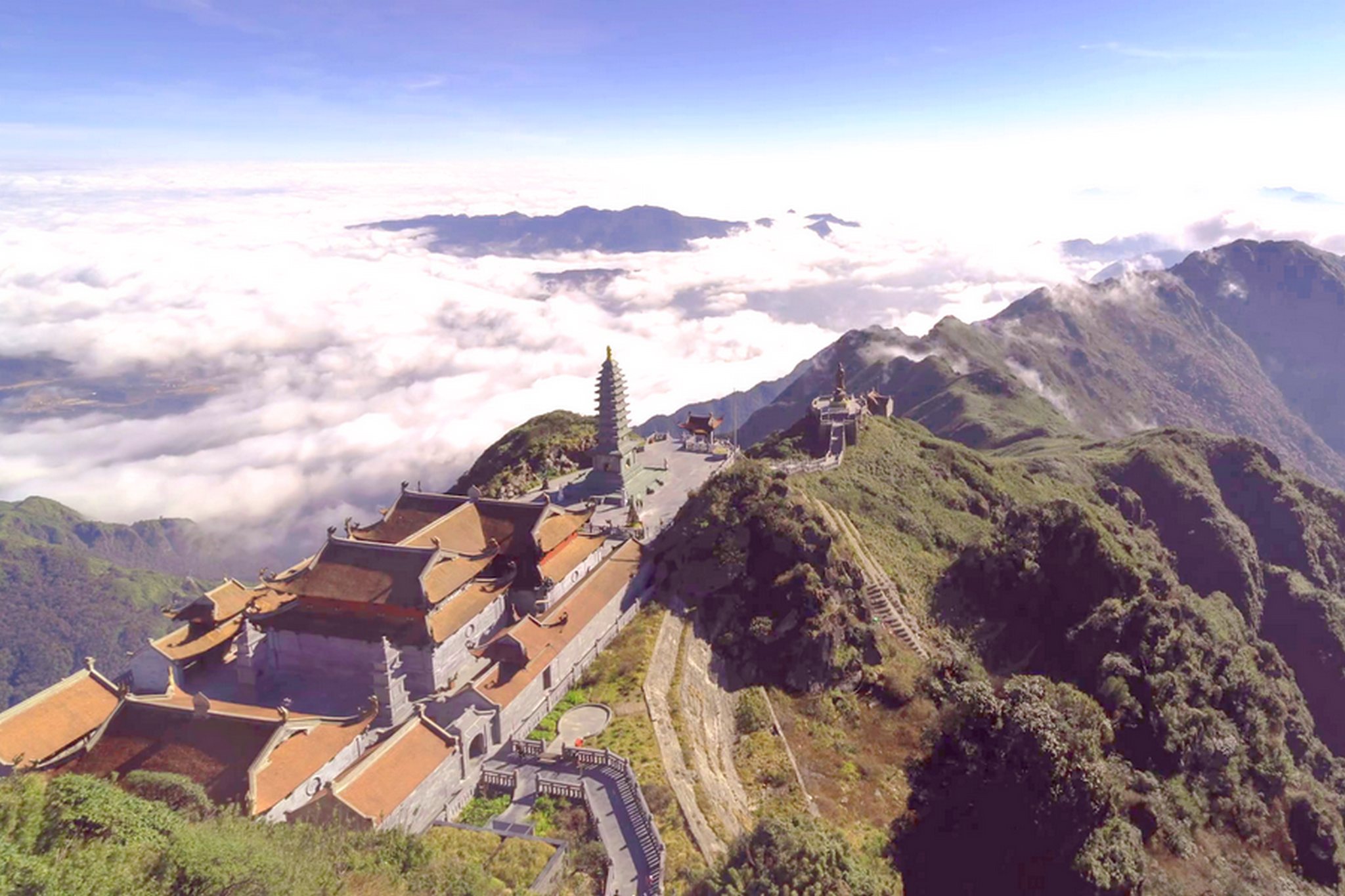
Fansipan Mountain is the highest peak in Vietnam and the Indochinese peninsula, with an elevation of 3,147.3 meters (10,326 feet). It is located in the Hoang Lien Son mountain range, near the town of Sapa in Lao Cai province. Fansipan Mountain offers stunning views of the surrounding valleys, forests, and rice terraces, as well as a rich biodiversity of flora and fauna.
Fansipan Mountain can be reached by two main ways: hiking or cable car. Hiking to the summit is a challenging but rewarding adventure that takes one to three days, depending on the route and the fitness level of the hikers. Along the way, hikers can enjoy the natural scenery, encounter local ethnic minorities, and camp in cabins or tents. The best time to hike Fansipan Mountain is from September to March, when the weather is dry and cool.
Alternatively, visitors can take the cable car, which is the longest and highest non-stop three-rope cable car in the world. The cable car ride takes about 15 to 20 minutes and covers a distance of 6,292.5 meters (20,637 feet). The cable car operates daily from 7:30 AM to 5:30 PM and costs 700,000 VND (about $30) for adults and 400,000 VND (about $17) for children. The cable car offers a spectacular aerial view of the landscape and saves time and energy for those who are not keen on hiking.
Whether by hiking or cable car, reaching the top of Fansipan Mountain is a memorable experience that will make you feel proud and amazed. You can admire the panoramic view of the region, take photos with the monument and the flag, visit the spiritual complex of temples and statues, and witness the sunrise or sunset if you are lucky. Fansipan Mountain is a must-see attraction for anyone who visits Sapa and wants to explore the beauty and culture of Vietnam's highlands.
Cat Cat Village: A Glimpse into Hmong Culture
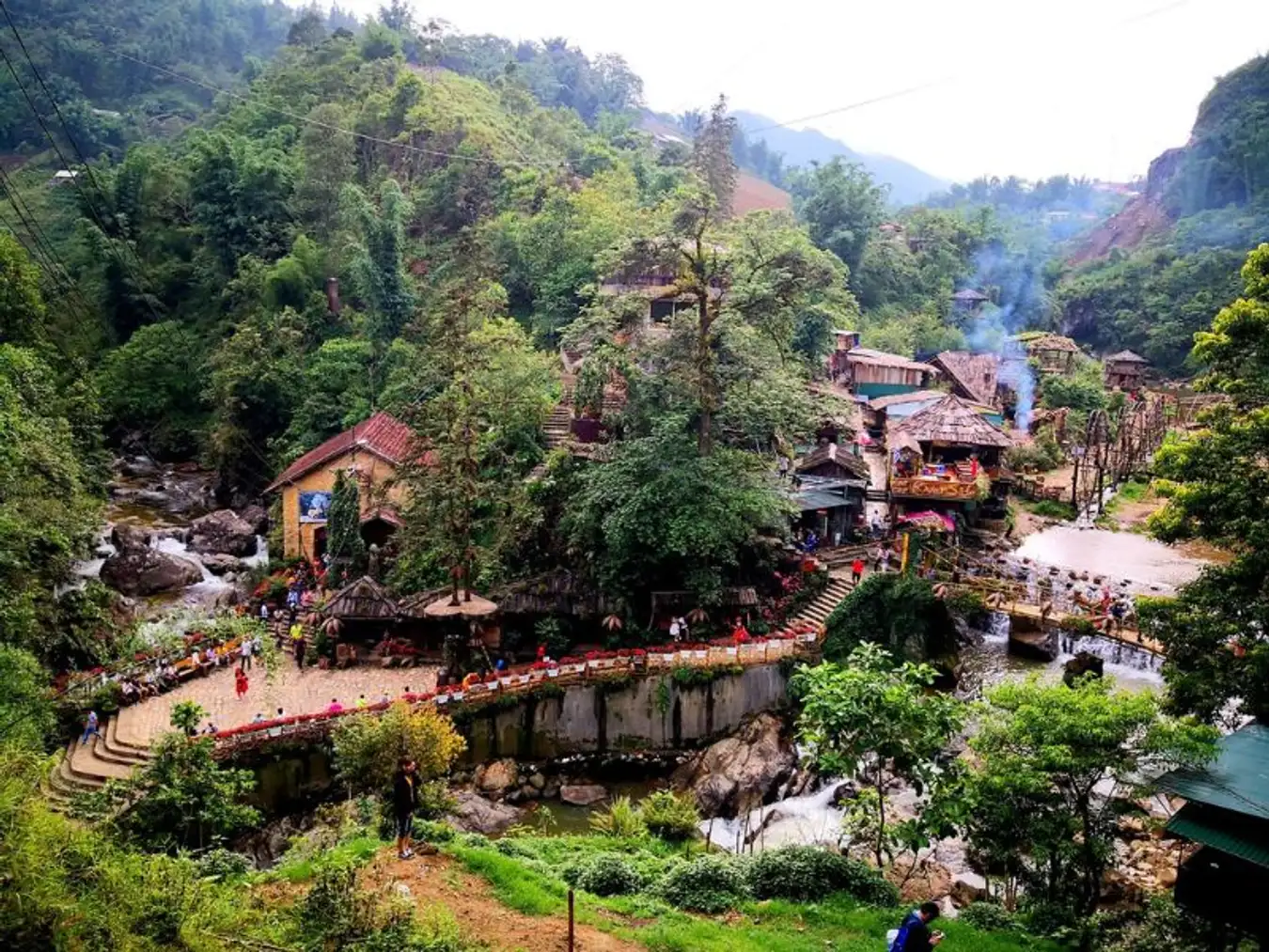
Cat Cat Village is a charming village of the Hmong ethnic group, located about 2 kilometers from Sapa town in northern Vietnam. The village is famous for its scenic views of the mountains, rice terraces, waterfalls, and streams, as well as its rich cultural heritage and traditional crafts. Visitors can explore the village by walking along the stone paths, browsing the shops selling handmade products, watching the local performances of music and dance, and tasting the delicious local cuisine. Cat Cat Village is an ideal destination for those who want to experience the authentic and colorful life of the highland people.
If you are wondering what time is the best to visit Cat Cat village, here are some tips for you:
- The best time to travel to Cat Cat village is from September to November, when the rice fields turn golden and the weather is mild. You can enjoy the stunning scenery of the terraced fields and the valley, and take amazing photos of the landscape and the people.
- Another good time to visit Cat Cat village is from March to April, when the village is submerged in spring with hundreds of flowers blooming. You can walk along the paths, enjoy the fragrance, and admire the colorful flowers and the mountains.
- If you want to avoid the crowds and have a peaceful experience, you should travel to Cat Cat village in the early morning. The shops tend to open around 9 to 9:30 am, so if you get there earlier, you will have more chances to explore the village without hopping around tourists constantly. You can also witness the sunrise over the valley and the waterfall, which is a beautiful sight.
- If you want to see the cultural performances of the Hmong people, you should travel to Cat Cat village in the afternoon. The village has a stage where the locals perform their traditional music and dance, such as the Khen dance, the flute dance, and the leaf-horn dance. You can watch the shows, join the games, and learn more about the Hmong culture.
Cat Cat village is a must-see attraction for anyone who visits Sapa and wants to experience the authentic and colorful life of the highland people. No matter what time you travel to Cat Cat village, you will find something interesting and memorable to do.
Cat Cat Village Price (Entrance fee) and opening hours:
Adult: 150,000 VND
From 1 meter to 1.4 meter (55.11 inches): 70,000 VNĐ
Under 1 meter (39.37 inches): Free
Openning hours: 06:00 - 17:00
Muong Hoa Valley: Trekking Through Time
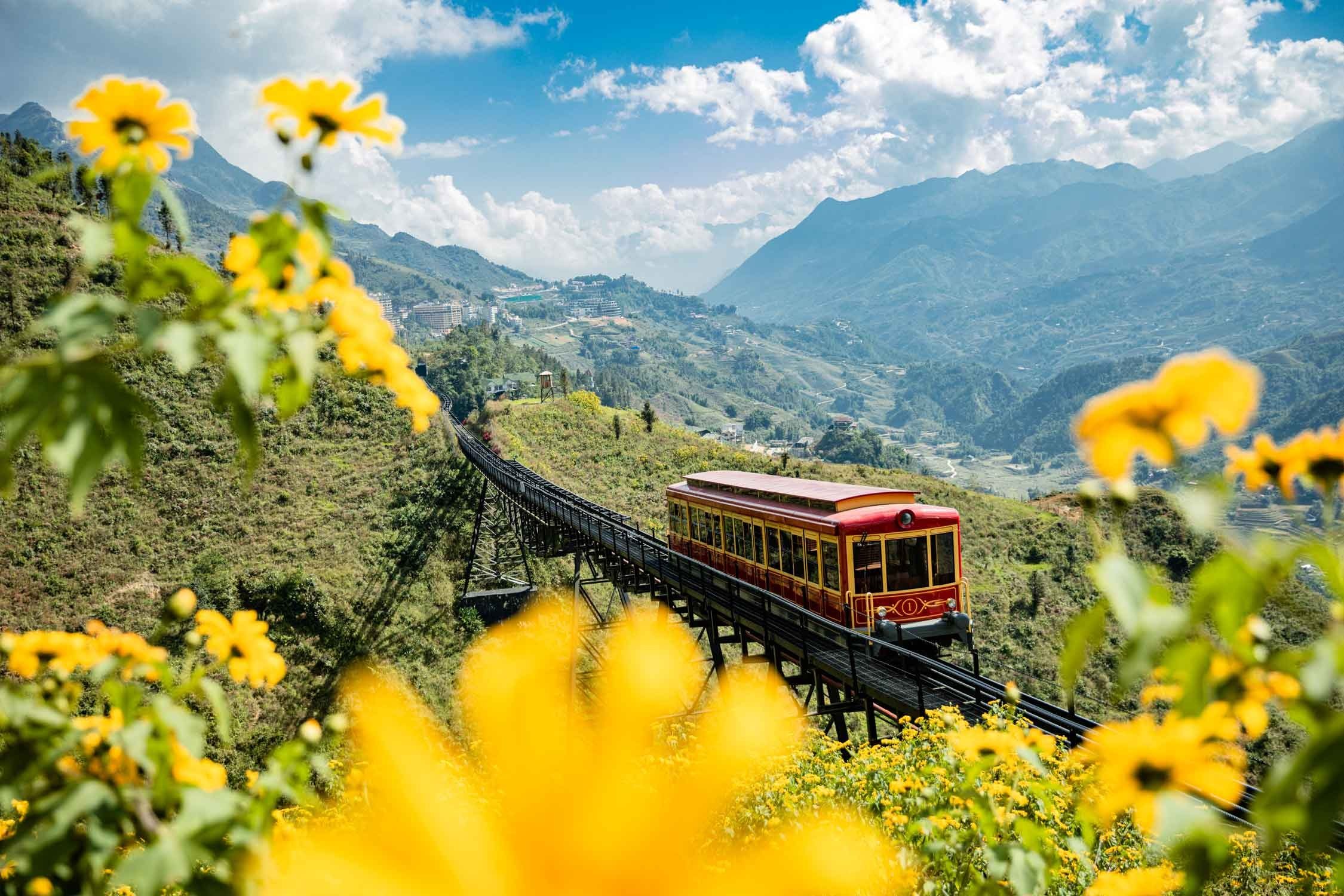
Muong Hoa Valley is a scenic valley in the southeast of Sapa town, where you can admire the stunning terraced rice fields, the ancient rock carvings, and the diverse ethnic cultures. The valley is home to several villages of the Hmong, Dao, Tay, and Giay people, who have lived there for thousands of years and preserved their unique traditions and customs. You can explore the valley by hiking, biking and enjoy the natural beauty and the cultural heritage of this place.
Some of the highlights of Muong Hoa Valley are:
- Muong Hoa Stream: This is a 15-kilometer-long stream that flows through the valley and creates a beautiful landscape of waterfalls, bridges, and bamboo forests. You can walk along the stream, cross the suspension bridges, and relax by the water.
- Terraced Fields: These are the most famous attraction of the valley, and one of the most beautiful terraced fields in Sapa and the world. The fields are carved into the mountainsides by the local people, and change colors according to the seasons. You can see the green of young rice in summer, the golden of ripe rice in autumn, and the white of snow in winter.
- Ancient Rock Field: Muong Hoa valley is home to the ancient stone field of Sapa, a remarkable sight that you can witness with your own eyes. This rocky beach covers an area of more than 8 square kilometers, nestled among the vast terraced fields. As you explore the site, you can marvel at the 200 rocks of various shapes and sizes, each one intricately carved with symbols and patterns. These carvings are believed to reflect the culture and spirituality of the ancient people who lived here. The rocky beach has a captivating beauty that attracts many tourists. In 1994, the Sapa ancient stone field was designated as a national historical site by the Ministry of Culture, Sports and Tourism.
- Ethnic Villages: These are the places where you can experience the authentic and colorful life of the highland people. You can visit the villages of the Hmong, Dao, Tay, and Giay people, and see their traditional houses, costumes, handicrafts, and festivals. You can also interact with the locals, learn about their culture and history, and stay at a homestay for a night.
Muong Hoa Valley is a must-see destination for anyone who visits Sapa and wants to discover the beauty and culture of Vietnam's highlands. No matter what time of the year you visit, you will find something interesting and memorable to do in this valley.
Ta Van Village
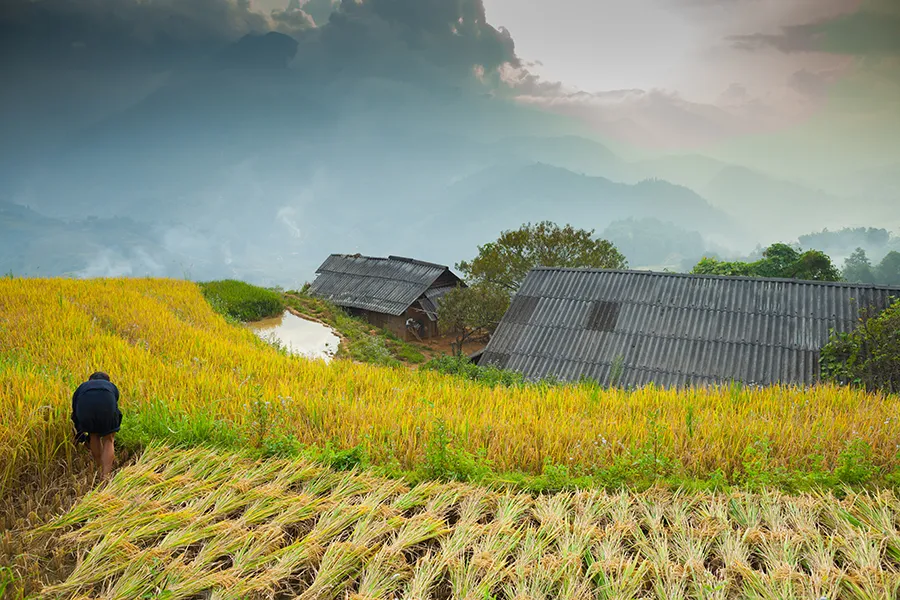
Ta Van Village is a picturesque village of the Giay ethnic group, located about 15 km from Sapa town in the southeast direction. The village is surrounded by the Hoang Lien Son mountain range and the Muong Hoa stream, creating a stunning landscape of terraced rice fields, waterfalls, and forests. Ta Van Village is an ideal place to experience the authentic and colorful culture and lifestyle of the highland people.
Some of the attractions and activities you can enjoy in Ta Van Village are:
- Hiking: You can hike along the trails that connect the villages of the Giay, Hmong, and Dao ethnic groups, and admire the natural beauty and the rural charm of the area. You can also interact with the locals, learn about their traditions and customs, and stay at a homestay for a night.
- Biking: You can rent a bike in Sapa town or in the village, and explore the valley at your own pace. You can cycle through the rice fields, the bamboo forests, and the bridges, and enjoy the fresh air and the scenic views.
- Cable car: You can take a cable car from the village to the Fansipan peak, which is the highest mountain in Vietnam and the Indochinese peninsula. The cable car ride takes about 20 minutes and offers a spectacular aerial view of the valley and the mountains.
- Handicrafts: You can visit the shops and stalls in the village, and buy some handmade products from the local artisans, such as silver and bronze jewelry, hemp and linen fabric, bamboo items, and ethnic costumes. You can also watch the artisans demonstrate their skills and techniques in making these crafts.
- Cuisine: You can taste some of the local specialties in the village, such as Thang Co (a soup made from horse meat and organs), Khang Gai (dried buffalo meat), corn wine, apple wine, rice in bamboo tubes, grilled chicken with honey, and corn tortillas. You can find these dishes at the restaurants, homestays, or street vendors in the village.
Ta Van Village is a must-see attraction for anyone who visits Sapa and wants to discover the beauty and culture of Vietnam's highlands. No matter what time of the year you visit, you will find something interesting and memorable to do in this village.
Ta Phin Village
Ta Phin Village is a peaceful and scenic destination in Sapa, Vietnam, where you can experience the authentic culture and lifestyle of the Red Dao and H'Mong ethnic groups. The village is surrounded by majestic mountains and green rice terraces, offering a stunning backdrop for your visit. You can explore the village on foot or by bike, and interact with the friendly locals who will welcome you with their colorful costumes and handicrafts. You can also visit the Ta Phin Cave, a natural wonder with fascinating stalactites and rock formations.
One of the highlights of Ta Phin Village is the traditional herbal bath, a relaxing and healing treatment that uses local herbs and plants. You can enjoy this bath at one of the local homestays, where you can also taste the delicious local cuisine and learn more about the history and customs of the Red Dao and H'Mong people. Ta Phin Village is a perfect place to immerse yourself in the nature and culture of Sapa, and discover the beauty and diversity of Vietnam.
Sin Chai Village
Sin Chai Village is a hidden gem in Sapa, Vietnam, where you can enjoy the pristine nature and the simple life of the Black H'Mong ethnic group. The village is located at the foot of Fansipan Mountain, the highest peak in Indochina, and offers breathtaking views of the valley and the forest. You can hike to the village from Sapa town, or take a motorbike or a car, and experience the rural charm and the hospitality of the locals.
You can also visit the nearby waterfall, the rice fields, and the herbal gardens, and learn about the traditional farming and weaving techniques of the Black H'Mong people. Sin Chai Village is a place where you can escape the crowds and the noise, and connect with the authentic culture and the natural beauty of Sapa.
Ham Rong Mountain
Ham Rong Mountain is a must-see attraction in Sapa, Vietnam, where you can enjoy the panoramic views of the town and the surrounding mountains. The mountain is named after the shape of a dragon's head, and it is rich in flora and fauna.
You can walk along the paved paths and stairs, and explore the different gardens, orchards, and rock formations. You can also visit the cultural village, where you can watch the performances of the local ethnic groups, such as the H'Mong, the Dao, and the Tay. Ham Rong Mountain is a place where you can experience the beauty and the diversity of Sapa.
Silver Waterfall (Thac Bac)
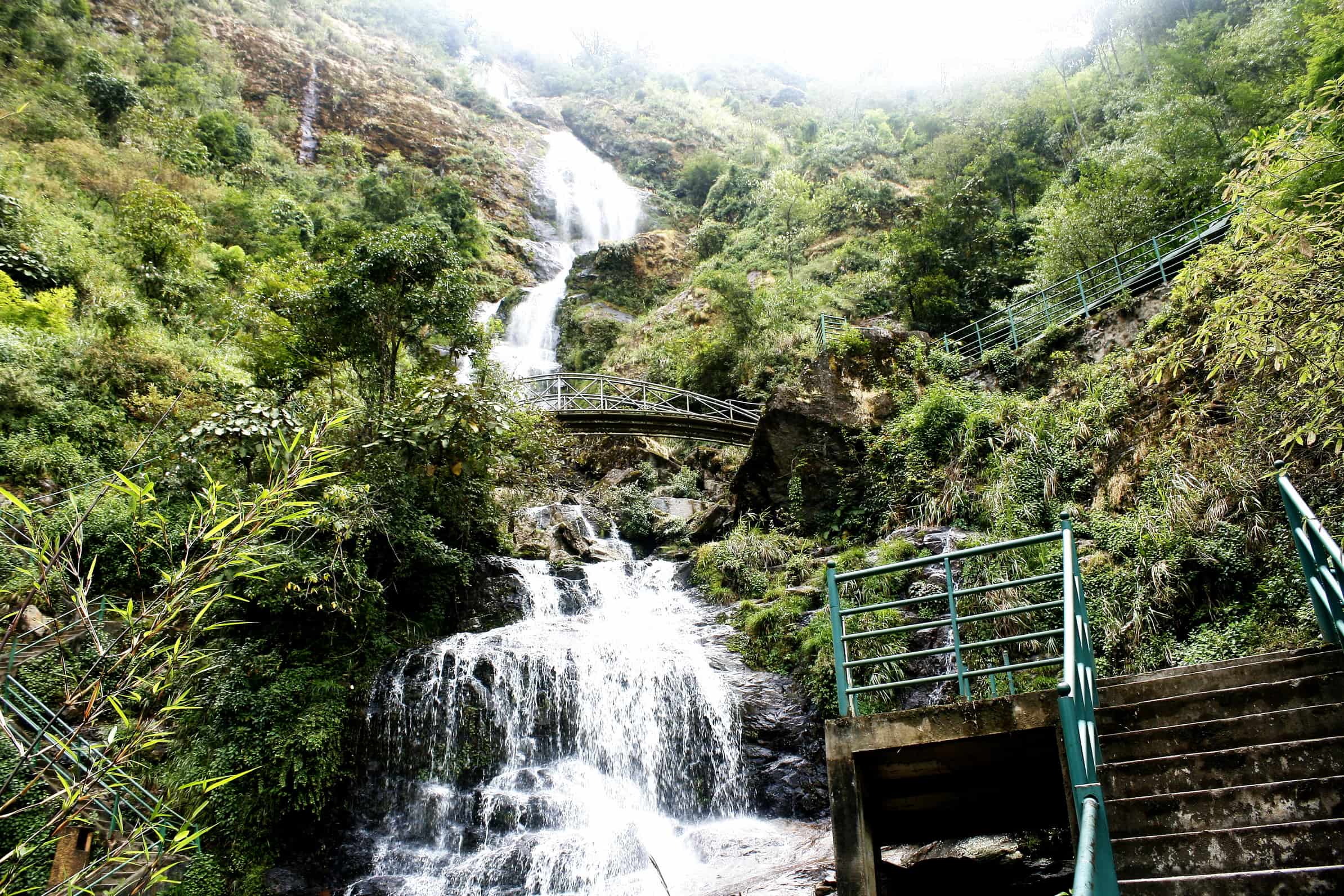
Silver Waterfall (Thac Bac) is a spectacular sight in Sapa, Vietnam, where you can witness the power and beauty of nature. The waterfall is located about 12 kilometers from Sapa town, on the way to the Tram Ton Pass, the highest mountain pass in Vietnam. You can reach the waterfall by car, motorbike, or bicycle, and enjoy the scenic views along the road.
The waterfall is about 100 meters high, and it cascades down from the top of the mountain, creating a thunderous sound and a misty atmosphere. You can climb up the stairs to the viewing platform, where you can admire the waterfall from a close distance. You can also take photos, relax, and breathe in the fresh air. Silver Waterfall (Thac Bac) is a place where you can experience the majesty and the serenity of Sapa.
Sa Pa Stone Church
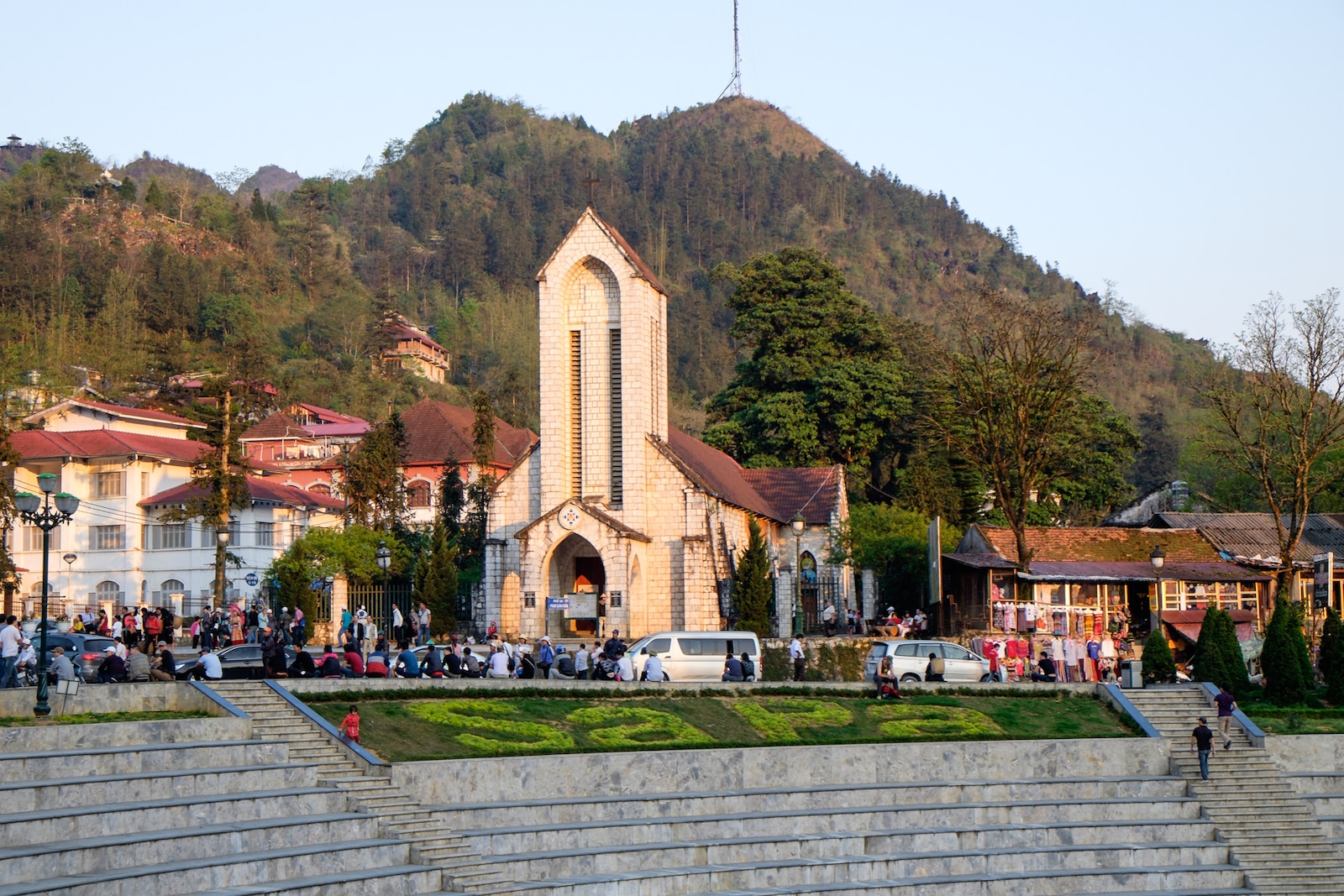
If you are looking for a unique and memorable destination in Vietnam, you should not miss Sa Pa Stone Church, also known as the Notre Dame Cathedral Sapa. This ancient church is located in the heart of Sa Pa town, a picturesque mountain resort in the northwest of Vietnam. Sa Pa Stone Church was built by the French colonizers in the 20th century and is one of the few remaining structures that preserve the soul and beauty of Catholic architecture in Vietnam. The church is made of stone blocks that are linked by a mixture of sand, molasses, and lime. The elegant cross-shaped bell tower, the colorful stained glass windows, and the ceiling made of iron and straw are some of the highlights of this church.
The church is not only a place of worship for the local Catholics, but also a cultural center for the ethnic minority groups in the area. Every Saturday night, you can see the famous Love Market, where young people from different tribes gather to sing, dance, and express their feelings. The church also organizes many festivals and events throughout the year, such as Christmas, New Year Ave.
The Sapa Stone Church (Holy Rosary Church) is a must-see attraction for anyone who wants to experience the rich history and culture of Sa Pa. It is a place where you can admire the stunning architecture, enjoy the lively atmosphere, and learn more about the diverse and fascinating people of Sa Pa.
Sapa Markets
If you are looking for an authentic and colorful experience in Vietnam, you should not miss the Sapa markets, where the local ethnic minorities gather to trade, socialize, and celebrate their traditions. Sapa is a mountainous town in the northwest of Vietnam, home to various ethnic groups such as the Hmong, Dao, Tay, Giay, and Xa Pho. Each group has its own distinctive culture, language, and costume, which create a vibrant and diverse atmosphere in the markets.
The Sapa markets are held on different days of the week, depending on the location and the occasion. Some of the most popular and unique markets are:
- Sapa Love Market: This is a special market that takes place every Saturday night at the Stone Church Square. It is a place where young people from different tribes come to meet their potential partners, express their feelings through music and dance, and exchange tokens of affection. The Sapa Love Market is a romantic and cultural event that attracts many visitors who want to witness the local customs and join the fun.
- Sapa Night Market: This is a lively and bustling market that operates from 4 pm to 10 pm on Friday to Sunday at the Fansipan Street. It is a place where you can find a variety of goods, such as handicrafts, souvenirs, clothes, accessories, and food. You can also enjoy the street performances, games, and activities that showcase the local talents and culture.
- Bac Ha Market: This is one of the largest and most colorful markets in the region, held every Sunday in the Bac Ha district, about 100 km from Sapa. It is a place where you can see thousands of people from different ethnic groups, dressed in their traditional costumes, selling and buying everything from farm products, livestock, textiles, jewelry, to homemade rice wine. You can also taste the local delicacies, such as thang co (horse meat soup), men men (corn cake), and corn wine.
- Can Cau Market: This is a unique market that specializes in buffalo trading, held every Saturday in the Can Cau commune, about 120 km from Sapa. It is a place where you can witness the impressive and exciting scenes of buffalo buyers and sellers bargaining, inspecting, and testing the animals. You can also see other animals, such as cows, pigs, horses, and dogs, as well as other goods, such as clothes, fruits, vegetables, and spices.
- Cao Son Market: This is a remote and rustic market that takes place every Wednesday in the Cao Son commune, about 90 km from Sapa. It is a place where you can immerse yourself in the natural and cultural beauty of the area, surrounded by mountains, rivers, and forests. You can also interact with the friendly and hospitable locals, who belong to the Hmong, Phu La, Dao, and Han ethnic groups, and learn about their lifestyles and traditions.
Sapa markets are more than just places for shopping. They are also cultural hubs where you can discover the rich and diverse heritage of the ethnic minorities in Vietnam. They are a feast for the senses, where you can see, hear, smell, taste, and feel the essence of Sapa. They are a must-visit attraction for anyone who wants to experience the authentic and colorful side of Vietnam.
Sapa Culture Museum
Sapa Culture Museum is a museum that showcases the history and culture of the ethnic groups in Sapa. It is located in a French-style building near the Sa Pa Stone Church. The museum displays various artifacts, such as costumes, tools, musical instruments, and pottery, that reflect the lifestyle and traditions of the ethnic people. You can also watch documentaries, listen to audio guides, and join workshops to learn more about the culture and customs of Sapa. Sapa Culture Museum is a place where you can gain a deeper understanding and appreciation of the ethnic groups in Sapa.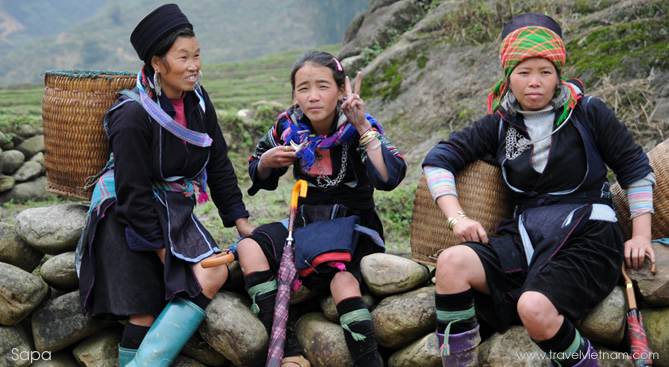
Sapa is a charming town in the northern mountains of Vietnam, where you can discover the stunning natural beauty, the rich cultural diversity, and the adventurous activities. Whether you want to trek through the lush rice terraces, visit the ethnic minority villages, shop for local handicrafts, or conquer the highest peak in Indochina, Sapa has something for everyone. Sapa is more than just a destination, it is an experience that will stay with you for a lifetime. Don't miss the chance to explore this amazing place and book your trip to Sapa today.
Last updated on 2024-02-27 04:35:06.

